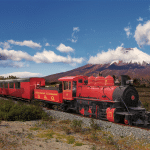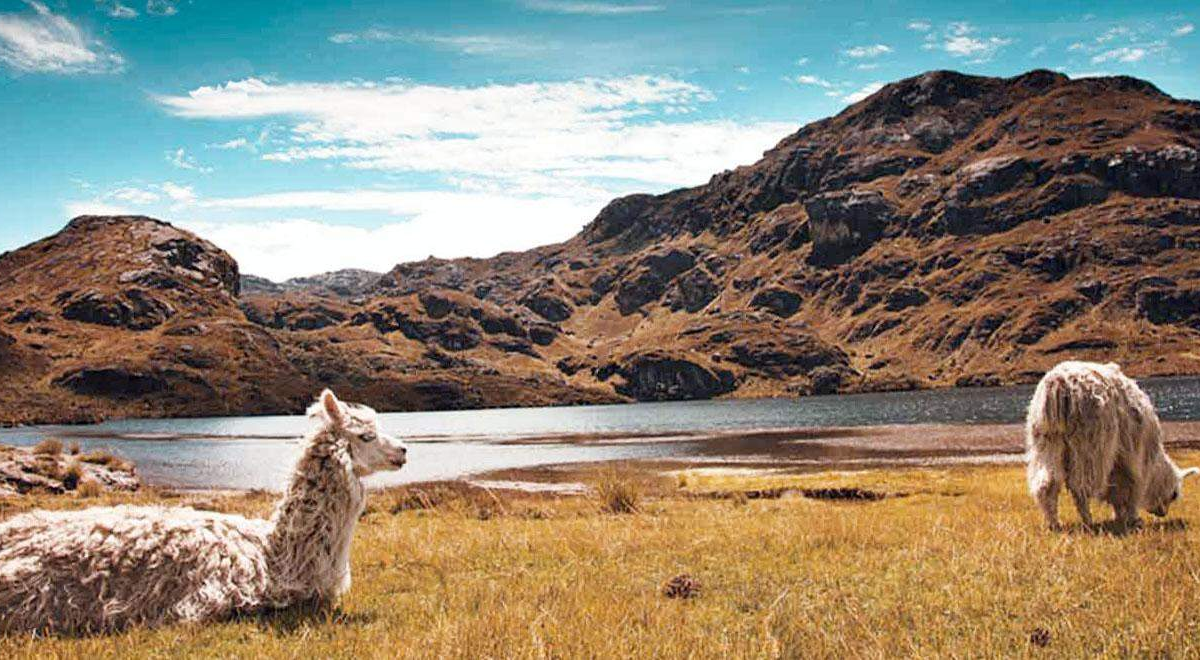
Ferrocarril de Ecuador: su importancia en la historia y en el turismo
April 16, 2025
La gastronomía de Ibiza: un festín para los sentidos
April 23, 2025Cajas National Park is a breathtaking gem located just a stone’s throw from Cuenca, Ecuador. This national park boasts stunning high-altitude landscapes, a rich variety of ecosystems, and an impressive array of flora and fauna. If you’re looking to immerse yourself in nature, Cajas is the place to be, offering everything from picturesque lakes to thrilling hiking trails. Let’s delve deeper into the wonders that await you in Cajas National Park.
Table of Contents
- Cajas National Park Overview
- Stunning Lakes of Cajas National Park
- Hiking Trails in Cajas National Park
- Wildlife Encounters in Cajas National Park
- Cultural Significance of Cajas National Park
- Frequently Asked Questions about Cajas National Park
Cajas National Park Overview
Cajas National Park is a sprawling natural reserve nestled in the Andes, known for its dramatic landscapes and unique ecosystems. Established in 1996, the park spans over 28,000 hectares of rugged terrain formed by ancient volcanic activity and glacial erosion. Its name, derived from the Quechua word for “gateway to the snow-capped mountains,” perfectly encapsulates its location in the heart of the Andean massif. Visitors can expect a diverse range of altitudes, from lush forests below 3,500 meters to vast paramo grasslands above.
The park is home to numerous lakes, with over 270 lagoons dotting the landscape, making it an ideal spot for hiking, birdwatching, and photography. Its unique climate, characterized by a cool temperature and high humidity, supports an impressive variety of plant and animal life, including the iconic Polylepis trees and elusive Andean condors. Nature lovers will find themselves enchanted by the untouched beauty of Cajas National Park.
Location and Accessibility
Cajas National Park is conveniently located about 30 kilometers from Cuenca, making it easily accessible for day trips or longer excursions. The drive from the city typically takes between 30 to 60 minutes, depending on which entrance you choose. There are several access points to the park, with the most popular being the main entrance near the information center.
For those relying on public transport, buses and taxis frequently run from Cuenca to the park’s various entry points. Alternatively, many tour operators offer guided excursions that include transportation, providing a hassle-free way to explore the park while gaining insights from knowledgeable guides. Whether you choose to drive or take public transport, reaching Cajas National Park is straightforward and provides stunning views along the way.
Unique Ecosystem and Biodiversity
The biodiversity found in Cajas National Park is nothing short of extraordinary. The park’s varied elevations create distinct ecological zones, supporting a wide range of plant species. Below 3,500 meters, you’ll find lush forests filled with vibrant trees, while the higher elevations feature the unique paramo ecosystem, characterized by hardy grasses and short plants that thrive in the cold, moist conditions.

One of the most notable features of the park is the Polylepis tree, known for its thick bark and twisted branches. This tree is adapted to withstand the harsh conditions of high altitudes, making it a symbol of resilience in the park. Additionally, the park is home to various wildlife species, including the Andean condor, deer, and numerous bird species, making it a haven for wildlife enthusiasts and birdwatchers alike. The incredible diversity of flora and fauna ensures that every visit to Cajas National Park feels like a new adventure.
Stunning Lakes of Cajas National Park
Laguna Toreadora
Laguna Toreadora is one of the most popular and picturesque lakes within Cajas National Park. Nestled at an altitude of about 3,900 meters, this stunning body of water is surrounded by rolling hills and vibrant paramo vegetation. The lake’s crystal-clear waters reflect the stunning Andes in the background, making it a fantastic spot for photography.

Visitors can easily reach Laguna Toreadora via well-marked trails that offer a moderate hiking experience. Along the way, hikers are treated to breathtaking views of the surrounding landscape, with opportunities to spot local wildlife, including various bird species and deer. The tranquility of the lake makes it a perfect picnic spot, where you can soak in the serene beauty of the park.
Hiking Trails in Cajas National Park
The Inca Trail
The Inca Trail is one of the most iconic hiking routes in Cajas National Park, offering a unique blend of historical significance and natural beauty. This trail, which is around 8 kilometers long, takes you through breathtaking landscapes dotted with ancient stone structures believed to be remnants of the Inca civilization. There is also tracks of 11 and 18 km. As you hike, you’ll be surrounded by stunning vistas of the Andes and the park’s numerous lakes.

The trail is moderately challenging, making it suitable for hikers with varying skill levels. Along the way, keep your eyes peeled for local wildlife, including the majestic Andean condor soaring overhead. The combination of historical charm and breathtaking scenery makes the Inca Trail a must for any hiking enthusiast visiting Cajas National Park.
Wildlife Encounters in Cajas National Park
Cajas National Park is a treasure trove of biodiversity, boasting a variety of ecosystems that are home to an impressive array of wildlife. This high-altitude paradise, characterized by its unique landscape of lakes and valleys, provides an ideal habitat for both common and rare species. As you explore the winding trails, keep your eyes peeled for the wonders that this park has to offer.
Birdwatching Opportunities
Birdwatching in Cajas National Park is nothing short of spectacular. The park is renowned for its diverse avian population, making it a hotspot for bird enthusiasts. With over 150 species documented, birdwatchers can expect to see everything from the majestic Andean condor to the vibrant caracara. Early mornings are particularly magical, as the park comes alive with the songs of chirping birds, providing the perfect symphony for your hike.
Some notable birds to look out for include:
- Andean Condor: The largest flying bird in the world, known for its impressive wingspan.
- Various Waterfowl: Lakes like Laguna Toreadora are often populated with ducks and other waterbirds, making them perfect spots for birdwatching.
You can also look out Guanacos: A relative of the llama, often seen grazing on the park’s rich grasses.
With the right pair of binoculars and a little patience, you can enjoy an unforgettable birdwatching experience amid the stunning landscapes of Cajas National Park.
Endangered Species to Spot
Cajas National Park is not only home to many species but also serves as a refuge for endangered wildlife. Among the most remarkable is the Spectacled Bear, the only bear species native to South America. This elusive creature prefers the dense forests and grassy patches of the park, making sightings quite rare but incredibly rewarding.
Other endangered species include:
- Andean Deer (Huemul): These graceful animals inhabit the park’s higher elevations and are known for their shy behavior.
- Various Frogs: Some unique amphibian species found here are threatened due to habitat loss.
Conservation efforts are vital in Cajas National Park, as the rich biodiversity is under threat from climate change and habitat destruction. Spotting these endangered species helps raise awareness about the importance of preserving their habitats.
Cultural Significance of Cajas National Park
Beyond its breathtaking natural beauty, Cajas National Park holds deep cultural significance for the local communities and indigenous peoples. The park serves as a vital resource and a symbol of heritage, reflecting the relationship between nature and culture in Ecuador.
Historical Context
Cajas National Park has a rich history that intertwines with the indigenous cultures of the region. Historically, this area was inhabited by the Cañari people, who revered the mountains and lakes for their spiritual and practical significance. The name “Cajas” itself derives from the Quechua word “cassa,” meaning “gateway to the snow-capped mountains,” highlighting the deep connection between the landscape and the local communities.
Established as a national park in 1982, Cajas has since been recognized for its ecological importance. The park not only protects unique ecosystems but also serves as a reminder of the cultural heritage of the indigenous peoples who have lived in harmony with these lands for centuries.
Indigenous Influence
The indigenous influence in Cajas National Park is still evident today. Local traditions and practices reflect a profound respect for nature, as many community members engage in sustainable practices that honor their ancestral ties to the land. The use of traditional medicinal plants, which can be found throughout the park, showcases the knowledge passed down through generations.
Visitors to Cajas National Park can experience this cultural richness firsthand. Guided tours often include insights into local customs and the significance of various landmarks within the park. Engaging with indigenous communities not only enhances your understanding of the park’s natural beauty but also fosters a deeper appreciation for the cultural heritage that is preserved in these stunning landscapes.
Frequently Asked Questions about Cajas National Park
What makes Cajas National Park a must-visit destination?
Cajas National Park is a breathtaking gem near Cuenca, Ecuador, known for its stunning high-altitude landscapes, rich ecosystems, and diverse flora and fauna. With over 200 lagoons, picturesque hiking trails, and unique wildlife, it offers a natural paradise for nature lovers and adventure seekers alike.
How can I access Cajas National Park from Cuenca?
Cajas National Park is conveniently located around 30 kilometers from Cuenca, making it easily accessible for day trips. You can drive, take a taxi, or use public transport, with buses frequently (with a frequency of 30-60 min. at the Centro de Información) running to the park’s various entry points. Many tour operators also offer guided excursions, providing a hassle-free way to explore the park.
What wildlife can I see in Cajas National Park?
Cajas National Park is home to an impressive array of wildlife, including the iconic Andean condor, deer, and numerous bird species. Birdwatching is particularly rewarding, with over 150 species documented. Additionally, the park serves as a refuge for endangered species like the Spectacled Bear and Andean Deer, making it a significant area for biodiversity.
